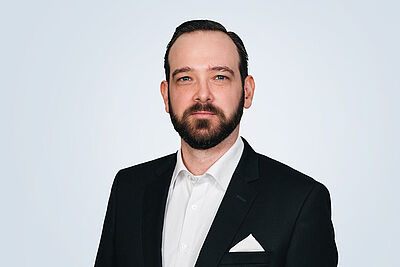The Factory Planning of the Future for Industry 4.0

The demands placed on a modern factory are more complex than ever. Satisfying customer needs in volatile markets requires flexible, efficient production environments in which digitalization and automation solutions are integrated as usefully as possible. Ambitious climate targets must also be observed and appealing working environments created for employees. These tasks call for a structured factory planning method, from the choice of the site to the construction of the production facility.
How Is the Factory of the Future Created?
Designing and planning sustainable, digital factories with maximum productiveness is a challenge that industrial companies are going to have to deal with continuously – often under heavy time pressure, too. This involves more than just new factories on greenfield sites. Given statutory environment targets, rising construction costs, shortages of space and materials, and shorter product life cycles, existing factories need to be made fit for the future as well (the key phrase here being “green brownfield”).
The field of factory planning includes the structured planning and design of future production capacity, logistics, and factory buildings as well as the monitoring of construction progress through to the ramp up of production. The factory of the future should be planned in a way that lets it use resources efficiently and transform, especially when considering sustainability and flexible usage. The field encompasses a complex range of tasks that, in the age of digitalization, requires sustainable solutions for numerous strategic areas:
-
Production layout
-
Lean production
-
Logistics planning (including material-flow planning) and production planning
-
Project control
These components must be connected together to form an excellent plant structure in which supporting processes, both value-creating and non-value-creating, are efficiently interwoven. At the same time, working environments that let employees unlock their full potential must also be created. Businesses will ideally meet these ambitious requirements by adopting a vision that they realize step by step through an implementation plan.
(Re-)Designing Factories to Be Sustainable
Greenhouse-gas-neutral production is an important milestone in an organization’s development into a zero-emissions company. Read our Insights page about zero-emissions companies and find out the elements of this transformation that are still significant and how your company can approach its decarbonization objective purposefully.
What Is the Best Approach for Manufacturing Businesses to Take?
Factory planning begins with an understanding of the systematic process (form follows function). Businesses achieve the best results when they develop a target layout (short distances, synergies, clusters, etc.) for their resource-efficient factory based on an ideal, zero-waste value stream. In the next step, they then transfer this model to the real world while considering all the restrictions that are present. After that, they can define and specify the building structure and form.
Methodical factory planning maximizes the potential of strategically important investments such as new build, site relocations, and site expansions. The easiest way for businesses to harness this potential is to work with an external planning partner.

In What Areas Can Ingenics Support You?
The factory of the future must connect visions such as the smart factory, green factory, and smart building in a purposeful way. Our consultants rely on a multistep approach and interdisciplinary set of tools and methods for this. Together with their client, they start with a status quo analysis, optimize processes, and define the requirements for the factory structures based on their findings. Afterwards, they oversee the project during all its stages, from selecting the site to bringing the factory online:
Site Selection
The key factors when selecting a factory site include, in particular, the company’s supplier mix and its geographical proximity to its market. With our know-how, we help you to find a site that can be integrated into your supply chain usefully when considering all political and sustainability-related factors.
Building/Factory Specifications
Given that product life cycles are becoming shorter and shorter, modern factories need building and factory structures that are as flexible and adaptable as possible. We provide you support for your conceptual and detailed planning and create detailed requirement specifications (in BIM or exported to classic documents) to serve as the foundation for the project’s realization by the general planners, architects, and technical planners.
Methodology and Approach: Building Information Modeling
To keep planning quality at the highest level from the outset and make the collaboration between all stakeholders efficient, there must be transparency about the costs and construction progress at all times. You can ensure this by using digital factory planning with building information modeling (BIM). BIM is a cooperative method for integrated construction project realization that organizes the interfaces between all trades involved in the construction project. It is accomplished by using a consistent, digital building model that captures all the information relevant to the factory life cycle and makes it manageable.
Plant Structure Plan/Master Plan
By performing a well-considered site analysis, you can find out how futureproof and economical a site is. To make this happen, we provide you with site concepts that include a financial analysis, calculations of the investments required, the envisaged stages, a cash outflow plan, and a schedule. In order for the general development concepts to be based on your current and future products, you also need layout solutions that support the long-term development of your company. Production that focuses on the value stream in turn requires carefully planned processes, structures, and layouts.
Construction of Factories
Effective project control, good change management, and well-functioning cost control are important requirements for the construction of your factory. We guide you through the construction and look after all important project management steps.
How Do You Profit from Factory Planning with Ingenics?
Advice – highly competent oversight of all project stages
Orientation – effective strategy at company and department levels
Efficiency gains – less space needed thanks to process optimization and layout planning as well as proposals for optimizing/adjusting architecture
Systematic approach – structured, methodical approach and clearly understood project management
Structuring – data analytics and processing with appealing graphic presentation
Participation – active shaping of the planning process (workshops, etc.)
Transparency – clear specifications for quality, costs, and dates; the results, costs, and construction progress can be viewed at any time
Documentation – original documents for internal usage or for submission to government offices
Certainty – security for project thanks to experienced team of experts
Challenge – “view from the outside,” assessment/improvement of processes, presentation of potential for optimization
Benchmarks – experience/industry testimonials increase competitiveness and provide opportunities for comparison
Innovation – new ideas, technologies, and problem-solving approaches
Concept(s) – sustainable site concept, including a financial analysis, calculations of the investments required, the envisaged stages, a cash outflow plan, and schedule
Intermediary – effective communication of requirements for the building design/communication between client and architect
FAQs about Factory Planning
Green Greenfield and Green Brownfield – What Do They Really Mean?
When a green factory is constructed on a new site, this is referred to as a “green greenfield project.” With these projects, the business enjoys all freedoms when designing the factory structure, when fitting out the building, and with the production processes. In practice, however, it is more common to upgrade existing factories and make them sustainable. These “green brownfield projects” require factory planners to question tried and tested efficiency-raising measures and ways of thinking. It is a continuous improvement process, unlike classic factory planning.
What Does Ingenics See as a Smart Factory?
A smart factory is a fully connected production environment in which the production equipment and logistics systems are largely organized by themselves. Seen historically, it represents the fourth stage in the factory’s evolution and forms the center of futuristic concepts such as Industry 4.0. The Internet of Things and connected cyberphysical systems act as the technological basis for it.

